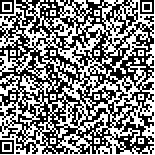下载中心
优秀审稿专家
优秀论文
相关链接
摘要

为了适应风云气象卫星遥感数据高精度地理定位要求,在研究和比较分析现有环境气象卫星遥感数据地理定位方法,尤其对其中关键的轨道计算模型进行对比研究之后,我们使用变阶变步长多步卫星轨道数值计算模型(DE/DEABM)进行气象卫星轨道计算,研制开发了新一代卫星轨道计算及遥感数据地理定位软件系统.该软件系统中卫星轨道数值积分计算模型包含了多项摄动因素计算,特别是对低轨卫星影响较大的因素,其中地球的球形引力项使用了高精度高阶EGM-96地球引力场模型,提高了非球形引力摄动计算精度,另外还考虑了太阳、月亮引力项,辐射光压摄动和大气摄动因素,使得轨道计算精度大大提高.在遥感数据定位算法开发工作中,以中国2002年5月发射的风云1号D星10通道扫描辐射计和计划2008年上半年发射的风云3号A卫星中分辨率光谱成像仪等遥感仪器为对象,比较详细地分析和研究了探测器、焦平面、主光学系统和扫描镜等遥感仪器几大关键部件的光学几何关系,提高了坐标转换系统计算精度.经过对风云1号D星多天逐日的轨道计算和定位计算试验,结果表明该软件系统24h风云1号D星轨道计算卫星矢径精度可达到几十厘米至几十米,较原来平根数分析解方法1000m左右精度有显著量级的提高.同时,风云1号D星遥感数据地理定位精度达到星下点1个像元.
In the program of geolocation with environmentalmeteorological satellite, the earth location softwaremakes\nuse of earth ellipsoid and terrain surface data in conjunctionwith satellite orbitparameterand geometry attitude, and infor-\nmation of the sensor and satellite geometry to compute data including geodetic longitude and latitude coordinates, height,\nground to satellite direction vectorand range, and solarvector. The satellite orbitpropagationmodeland themathematical\nprocedure which intersects the sensor s line ofsightwith the terrain surface oftheEarth aremost mi portant in the program.\nIn order tomeetthe requirementofhigh precision geolocation forenvironmentalsatellite remote sensingdata, we have\ndeveloped a new generation orbitalmotion forecastand remote sensinggeolocation software system. This system isbased on\nthe variable order, and stepsize orbitalmotion numerical integrationmodel (DE/DEABM), and is different from conven-\ntionalBrouwer perturbation analyticalmode.l During the research of this system, we have studied variety ofperturbations\nthat affect orbitalmotion. These perturbations are pronounced for satellite at low altitudes. We use high order precise\nEGM-96 (Earth gravitymodel) data to mi prove computing precision ofperturbation for asphericity of theEarth. Whatwe\nput into consideration also includes the perturbation that arises from the gravitational attraction of the Sun and theMoon,\nsolar radiation pressure and atmospheric drag in ourworks. As case studies, we developEarth location algorithms and soft-\nware for two sensors, one isFY-1D VIRR launched onMay2002, and the other isFY-3AMERSIwhichwillbe launched\nin early 2008. In the progress, we analyse details of the optics geometry coordinates relationship ofdetector, focalplane,\nmain optics system and scanmirror, which are key parts of sensors. As a result, the precision of coordinates transforma-\ntionmodelhave been developed in this software. After severaldays ofdata computing oforbitalmotion and Earth location\ntest forFY-1D VIRR, we find that the precision of the new software system reaches the range from centmi eters tometers.\nIt is a great mi provement comparedwith the 1km precision ofold perturbation analyticalmethod. Overal,l it is found that\nthe software system ofFY-1D VIRR can provide navigation accuracies ofwithin 1 km atnadir.

